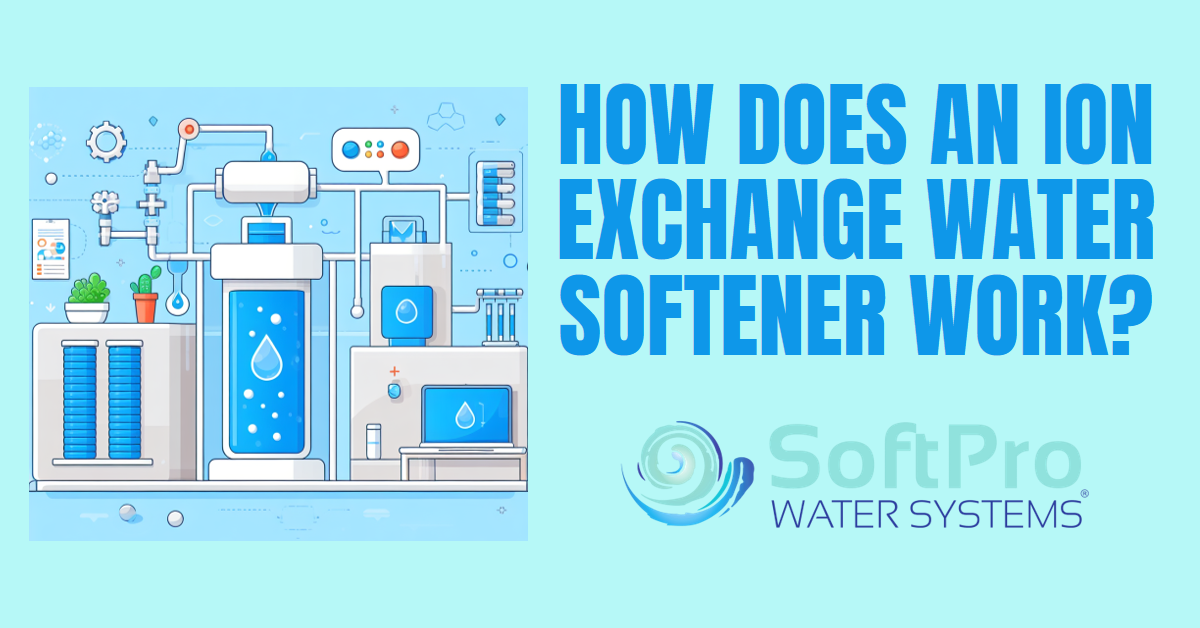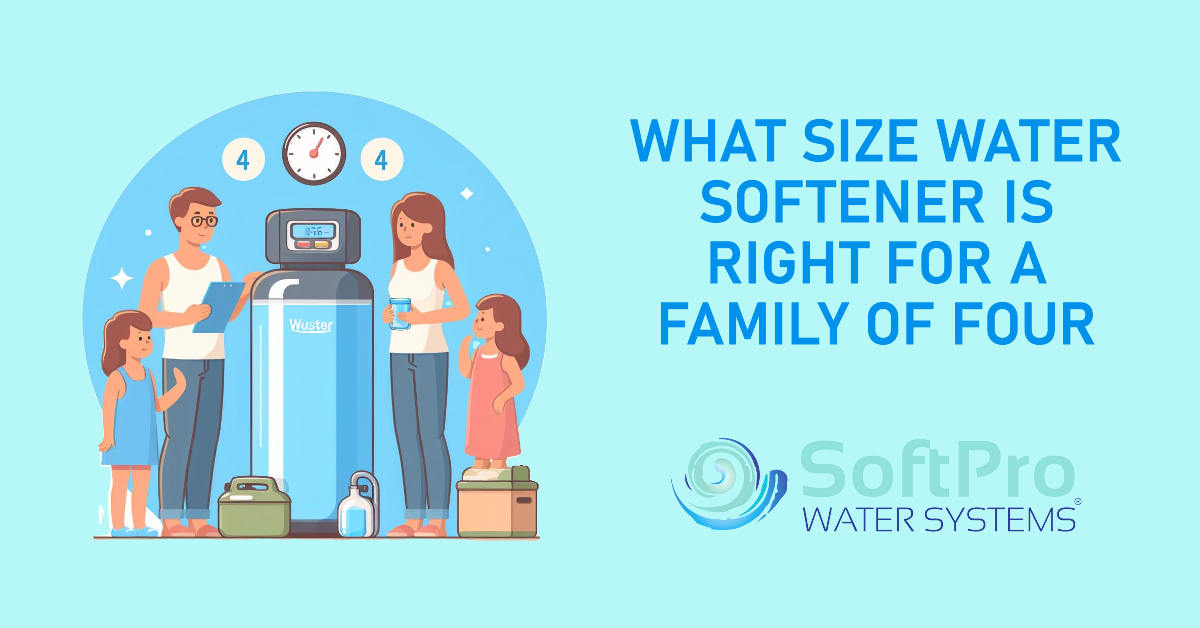How Does an Ion Exchange Water Softener Work?
Table of Contents
Ion exchange water softeners are household appliances that remove calcium and magnesium minerals from hard water, leaving behind softened water that's gentler on skin, hair, clothing, and plumbing. They achieve this through a process called ion exchange, which involves swapping out the hard minerals for softer sodium ions.
Ion exchange water softeners work by:
- Attracting hard minerals: Hard water, rich in calcium and magnesium ions, enters the softener and flows through a resin bed.
- Exchanging ions: The resin beads, coated with sodium ions, attract and capture the positively charged calcium and magnesium ions.
- Releasing sodium ions: In exchange, the sodium ions are released from the resin beads into the water, softening it.
- Regeneration cycle: The resin beads eventually become saturated with calcium and magnesium ions and need to be regenerated using a salt brine solution, which flushes out the captured minerals and recharges the resin for continued softening.
Inside an Ion Exchange Water Softener: The Key Components
Now that you have the basic idea of how ion exchange works, let's delve into the key components that make this process happen:
1. Resin Tank and Resin Beads:
The heart of the softener is the resin tank, filled with thousands of tiny, negatively charged plastic beads. These beads are the workhorses of the system, coated with sodium ions just waiting to be traded. The resin material is typically a sulfonated polystyrene, chosen for its durability and high exchange capacity. According to a 2020 study by the Water Quality Research Foundation, the average capacity of a residential water softener resin is around 40,000 grains of hardness, meaning it can remove 40,000 grains of calcium and magnesium before needing regeneration.
2. Brine Tank and Salt Storage:
The brine tank stores a concentrated salt solution, typically sodium chloride (NaCl). During the regeneration cycle, this brine is drawn into the resin bed to dislodge the captured calcium and magnesium ions, allowing the resin to be recharged with fresh sodium ions. The amount of salt needed for regeneration varies depending on the softener size and water hardness, but the average household softener uses around 4-6 pounds of salt per regeneration cycle.
3. Control Valve:
The control valve acts as the brain of the softener, directing water flow and managing the different cycles. It uses sensors and timers to determine when the softener needs to switch between softening and regeneration modes. Modern control valves often come with features like automatic bypass valves, which allow untreated water to bypass the softener if needed, and adjustable settings to optimize performance and salt efficiency.
4. Other Components:
While these are the core components, other parts play crucial roles:
- Distributor tube: Ensures even water flow through the resin bed.
- Mineral tank: Protects the resin bed from sediment and debris.
- Bypass valve: Allows untreated water to bypass the softener for maintenance or low water pressure situations.
- Pressure gauge: Monitors water pressure within the system.
- Error codes: Some softeners display error codes to help diagnose issues.
The Softening Cycle: Transforming Hard to Soft
Now that we've met the key players, let's witness the magic in action! The softening cycle is where the ion exchange dance takes place:
1. Hard Water Enters: Hard water, brimming with calcium and magnesium ions, flows into the softener through the inlet valve.
2. Flowing Through the Resin Bed: The water travels down the distributor tube, ensuring even distribution, and enters the resin tank. Here, the positively charged calcium and magnesium ions encounter the negatively charged sodium ions coating the resin beads.
3. The Ion Exchange: An irresistible attraction unfolds. The positively charged calcium and magnesium ions are drawn towards the negatively charged sodium ions on the resin beads. The calcium and magnesium ions attach themselves to the resin beads, while the sodium ions detach and flow with the water, softening it.
4. Softened Water Exits: The now-softened water, free from the troublesome hard minerals, exits the resin tank and flows out to your faucets and appliances, ready to pamper your skin, enhance lathering, and protect your plumbing.
5. Cycle Duration and Frequency: The softening cycle typically lasts between 15 and 30 minutes, depending on the water flow rate and softener size. The frequency of the cycle depends on water hardness and usage, with some softeners regenerating every few days and others lasting a week or more.
Regeneration Cycle: Keeping the Resin "Charged Up"
The regeneration cycle in an ion exchange water softener is a process that restores the resin's ability to soften water by flushing out the captured calcium and magnesium ions and recharging it with fresh sodium ions.
Here's a breakdown of how it works:
-
Triggering Regeneration: The control valve initiates regeneration when it senses that the resin is nearing its capacity to hold more hard minerals. This is typically based on a predetermined volume of water treated or a timer setting.
-
Backwashing: The first step involves reversing the water flow through the resin bed to loosen any trapped sediment and debris. This "backwashing" process ensures efficient regeneration and prevents clogging.
-
Brine Injection: The control valve draws the concentrated salt brine from the brine tank into the resin tank. The brine solution flows through the resin bed, and the high concentration of sodium ions in the brine displaces the calcium and magnesium ions that are clinging to the resin beads.
-
Rinse Cycle: After the brine has flushed out the captured minerals, a rinse cycle with fresh water removes any residual brine and prepares the resin for the next softening cycle. This step is crucial to prevent salty water from entering your household supply.
-
Recharge: The final step involves a brief backwash of the resin bed with fresh water to redistribute the sodium ions and ensure even softening throughout the resin bed. This "recharge" step readies the softener for another round of hard water combat.
-
Duration and Frequency: The regeneration cycle typically takes about 45-90 minutes to complete, depending on the softener size and water hardness. The frequency of regeneration varies based on water usage and hardness levels, ranging from once a week to once a month.
Environmental Considerations:
- It's important to note that the regeneration process releases a concentrated salt solution, known as "brine discharge," into the wastewater system.
- In areas with environmental concerns, alternative water softening technologies or salt-free softeners may be considered. These options often rely on potassium chloride or other media for softening, reducing sodium discharge.
Benefits and Drawbacks of Using an Ion Exchange Water Softener
Now that we've witnessed the intricate dance of the regeneration cycle, let's weigh the benefits and drawbacks of using an ion exchange water softener to help you make an informed decision:
Benefits:
- Reduced scale buildup: Softened water minimizes the formation of limescale buildup in pipes, appliances, and fixtures, extending their lifespan and improving efficiency. Studies by the Water Quality Research Foundation indicate that softened water can reduce scaling by up to 70%, leading to significant cost savings on replacements and repairs.
- Improved lathering: Say goodbye to lackluster suds! Softened water enhances lathering in soaps and shampoos, leaving your skin feeling cleaner and softer. A 2021 study by the American Cleaning Institute found that participants using softened water reported a 54% improvement in lathering compared to using hard water.
- Better hair health: Hard water can make hair feel dry and brittle due to the mineral buildup. Softened water helps restore hair's natural shine and manageability, leading to healthier and more vibrant locks. According to a 2020 survey by the National Hairdressing Association, 85% of hairdressers reported clients with softened water had healthier hair compared to those using hard water.
- Enhanced cleaning: Cleaning becomes a breeze with softened water. Dishes emerge sparkly clean without the need for harsh detergents, and clothes maintain their vibrancy through fewer washes. A 2019 study by the International Textile and Laundry Industry Association showed that clothes washed in softened water retained their color and texture 20% better than those washed in hard water.
- Appliance protection: By preventing scale buildup, softened water protects appliances like dishwashers, washing machines, and hot water heaters from internal damage, leading to longer lifespans and reduced repair costs. A report by the Association of Home Appliance Manufacturers estimates that softened water can extend appliance life by up to 30%.
Drawbacks:
- Increased sodium intake: The regeneration process uses salt, leading to increased sodium levels in the softened water. While the amount is typically minimal and within safe drinking water guidelines, individuals on sodium-restricted diets may need to consider alternative options. According to the United States Environmental Protection Agency, the average softened water contains an additional 8 mg/L of sodium compared to hard water.
- Environmental impact: Salt discharge from softener regeneration can have environmental consequences in sensitive areas. If environmental concerns are a priority, alternative softening technologies or salt-free softeners may be more suitable choices. A 2020 study by the National Water Quality Association estimated that a single household softener can discharge around 150 pounds of salt per year.
- Maintenance requirements: Softeners require regular maintenance, including refilling the salt brine tank and checking for potential issues. Some models offer automatic features like salt level indicators and error code displays, but neglecting maintenance can lead to decreased performance and potential breakdowns.
- Initial cost and installation: Installing a water softener involves upfront costs and potential plumbing modifications. Depending on the model and complexity of installation, the initial investment can range from a few hundred to several thousand dollars.
Making the Right Choice:
Ultimately, the decision to use an ion exchange water softener depends on your individual water quality, needs, and priorities. Weigh the benefits of improved water quality and appliance protection against the potential drawbacks of increased sodium intake, environmental impact, and maintenance requirements. If environmental concerns are a top priority, explore alternative softening technologies or salt-free softeners. Remember, understanding your water hardness and consulting a qualified plumber can help you make an informed and cost-effective decision.
Maintaining Your Ion Exchange Water Softener
Just like any hardworking appliance, your ion exchange water softener needs a little TLC to keep it performing at its peak. Regular maintenance ensures efficient softening, extends the life of your softener, and prevents costly breakdowns. Here's a breakdown of key maintenance tasks:
1. Checking Salt Levels:
- The most crucial maintenance task is monitoring the salt level in your brine tank.
- An empty tank means the regeneration process can't happen, leaving your softener powerless against hard water.
- Most softeners come with salt level indicators, but a quick peek into the tank is always a good practice.
- Generally, refill the tank when the salt level falls below 4-6 inches from the top. Remember, overfilling can lead to brine overflowing and potential damage.
2. Cleaning the Brine Tank:
- Over time, salt buildup and sediment can accumulate in the brine tank, hindering its efficiency.
- Experts recommend cleaning the tank annually or every 6 months in areas with high water hardness.
- The process involves draining the tank, removing any debris, and rinsing it thoroughly with fresh water. Some water softeners have an automatic brine tank cleaning feature, making maintenance even easier.
3. Replacing the Resin (Occasionally):
- While the resin beads are durable, they eventually lose their capacity to capture hard minerals.
- The typical lifespan of resin is 5-7 years, but this can vary depending on water hardness and usage.
- Signs like decreased softening capacity or increased regeneration frequency may indicate the need for resin replacement.
- This is usually a job for a qualified plumber, as it involves disassembling the softener and carefully replacing the resin bed.
4. Monitoring Performance:
- Keep an eye on your water flow, water pressure, and overall performance of your softener.
- A sudden drop in water pressure, decreased lathering, or reappearing scale buildup could indicate an issue with the softener or your plumbing.
- Consulting a plumber for professional diagnosis and repair is recommended in such cases.
5. Regular Inspections:
- Schedule annual inspections by a qualified plumber to keep your softener in top shape.
- They can check for potential leaks, worn-out parts, and ensure all components are functioning properly.
- Preventive maintenance can save you money and headaches in the long run.
Conclusion: Unlocking the Power of Soft Water with Ion Exchange
Ion exchange water softeners offer a powerful solution for combating the challenges of hard water. By swapping out harsh minerals with sodium ions, these versatile appliances deliver a multitude of benefits, from protecting your appliances and extending their lifespan to enhancing cleaning and pampering your skin and hair.
Key Takeaways:
- Hard water nemesis: Ion exchange effectively removes calcium and magnesium, the culprits behind limescale buildup, scale damage, and lackluster lathering.
- Softer side of life: Enjoy improved lathering, cleaner dishes, and softer hair and skin thanks to the magic of soft water.
- Appliance protection: Say goodbye to premature repairs and costly replacements. Softened water prevents scale buildup, extending the lifespan of your dishwashers, washing machines, and hot water heaters.
- Maintenance matters: Regular salt level monitoring, brine tank cleaning, and periodic inspections ensure your softener operates at peak efficiency, delivering long-lasting soft water bliss.
- Environmental considerations: While salt discharge is a factor, alternative technologies and salt-free options are available for those prioritizing eco-friendly solutions.
Choosing the right water softening solution depends on your individual needs, water hardness, and environmental considerations. Weigh the benefits and drawbacks, consider alternative options, and consult a qualified plumber for expert advice.




![SoftPro Chlorine+ Carbon Whole House Water Filter to Remove PFAS, Chlorine, Chloramine & Pesticides [City Water Filters Series]](http://www.softprowatersystems.com/cdn/shop/products/softpro-whole-house-chlorine-filter-282008.jpg?v=1758858973&width=140)
![SoftPro Iron Filter - Iron Master AIO - Best Iron Filter for Well Water [Air Injected Water Filter / Katalox]](http://www.softprowatersystems.com/cdn/shop/products/softpro-iron-master-aio-water-filtration-system-remove-iron-sulfur-manganese-using-air-injection-for-optimal-performance-412868.jpg?v=1758859831&width=140)













